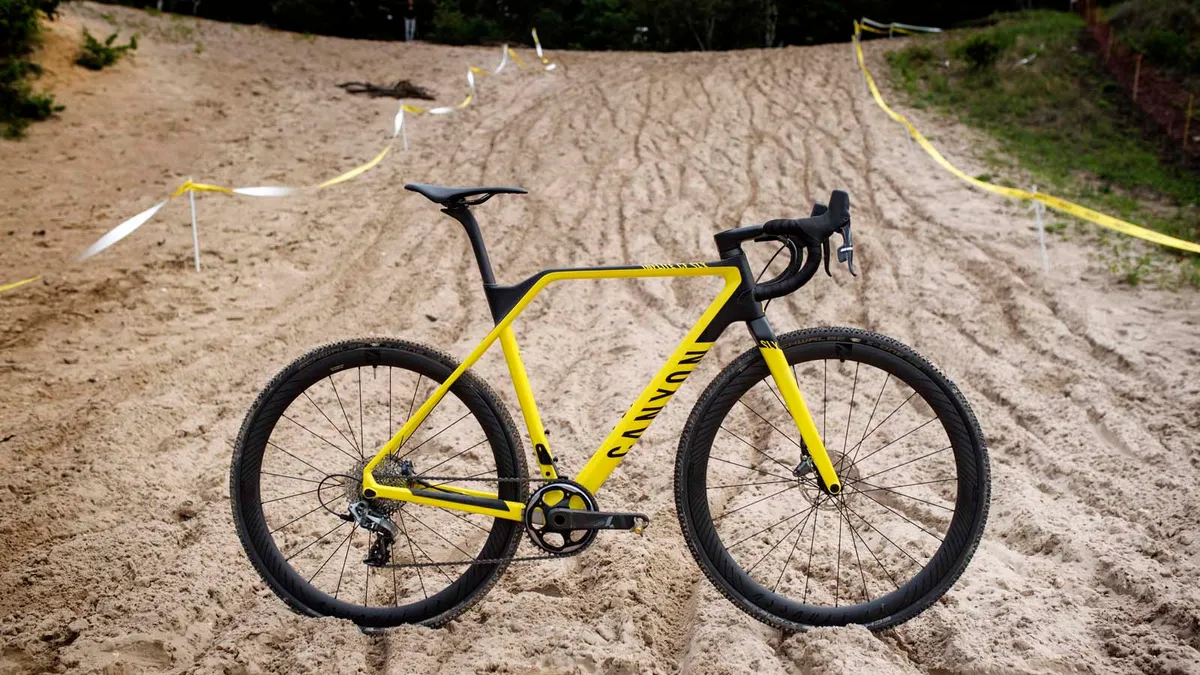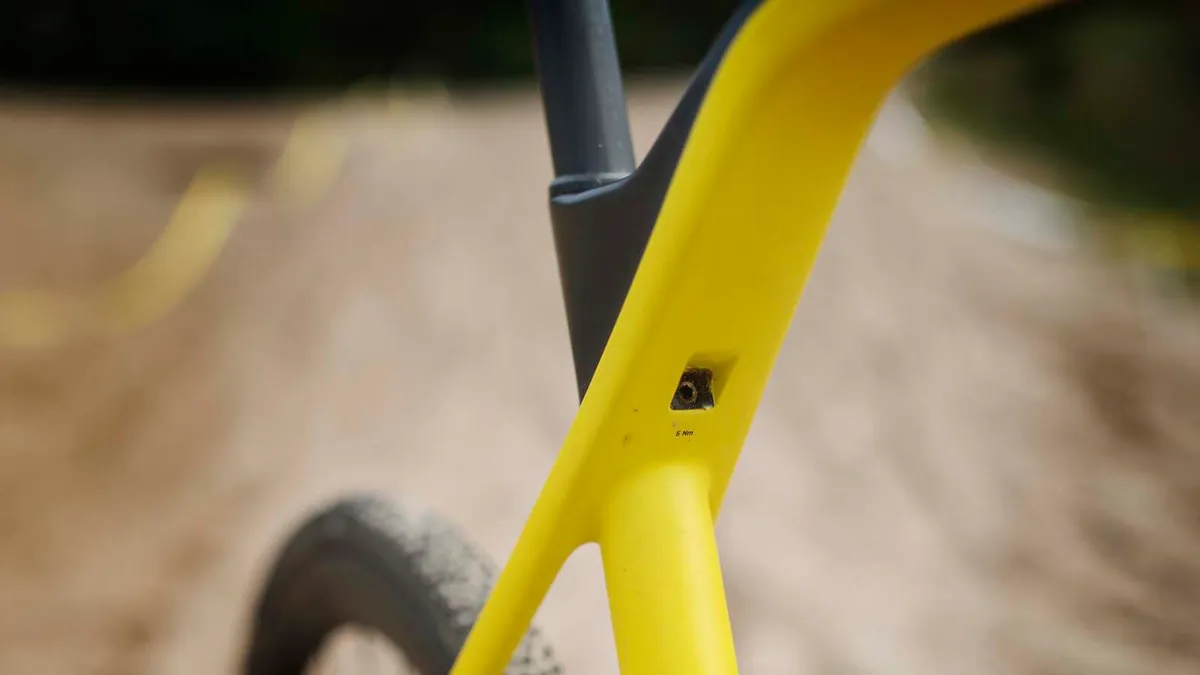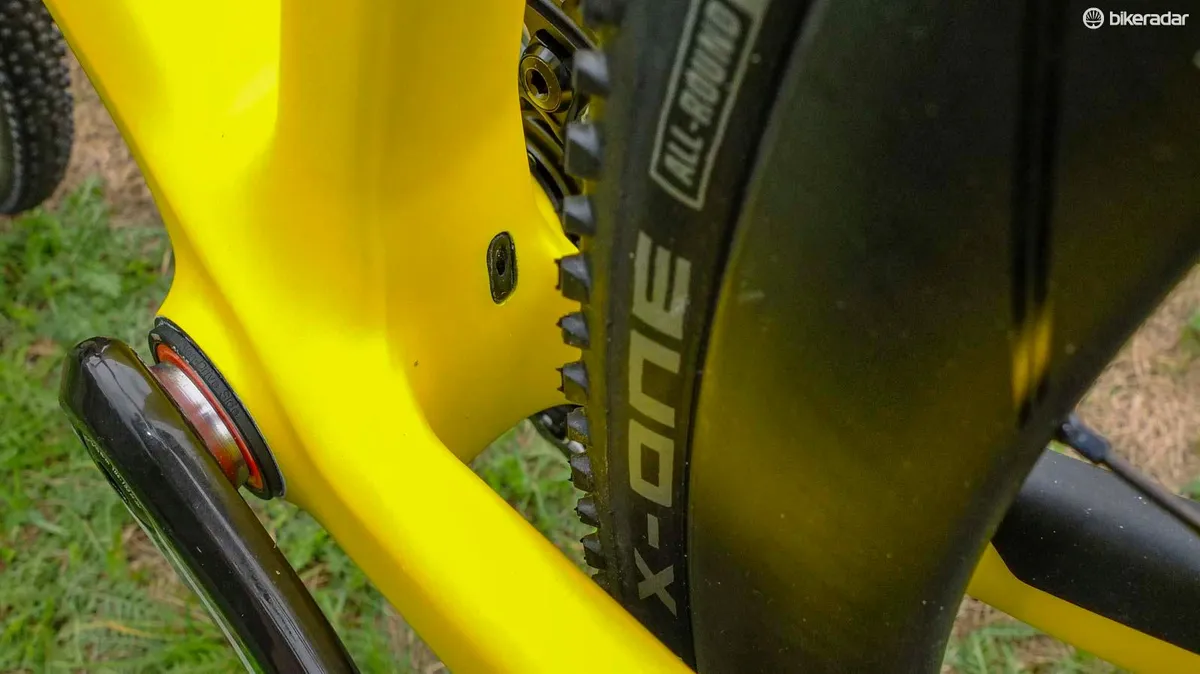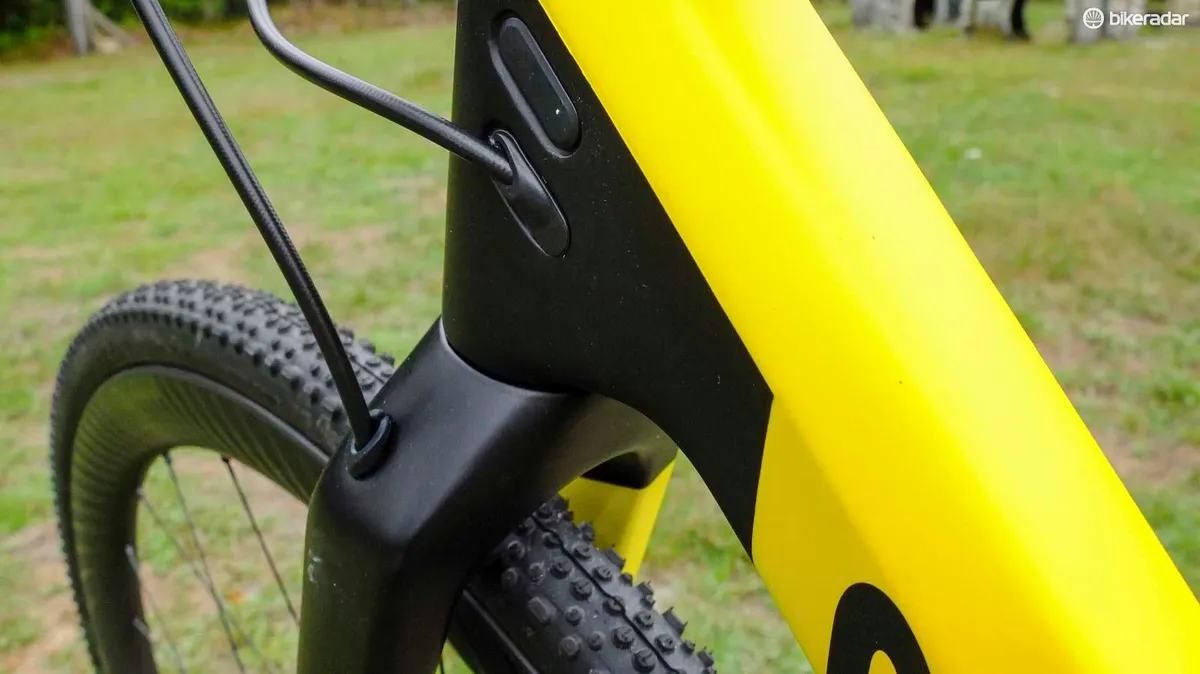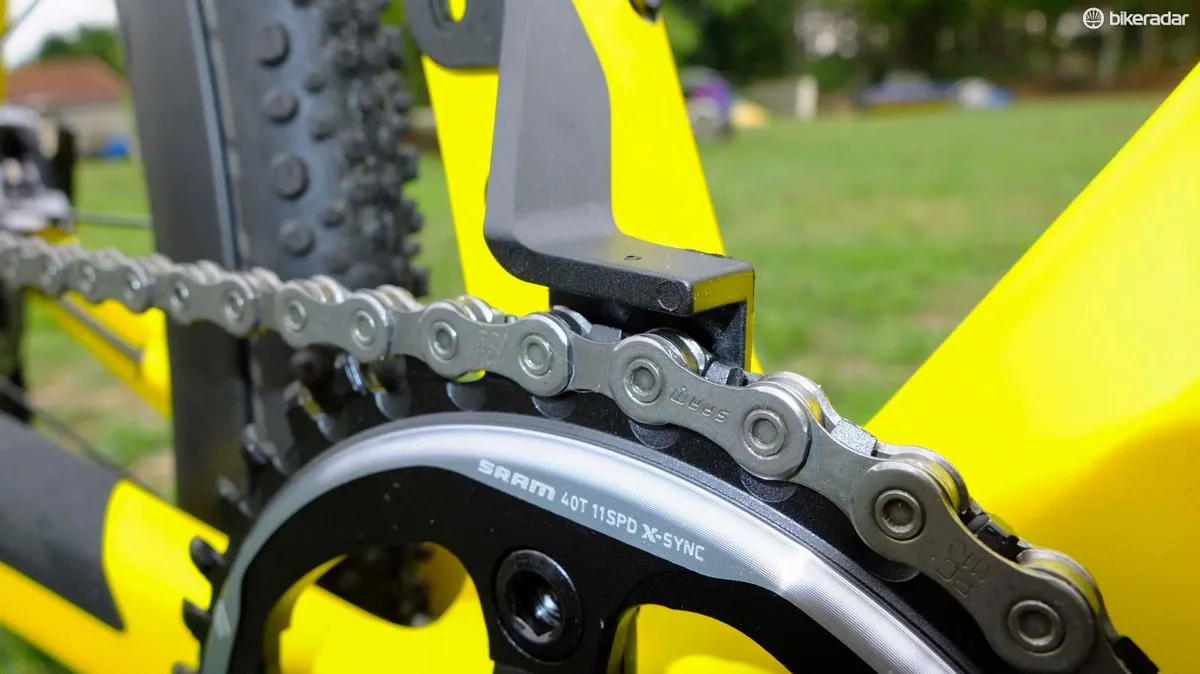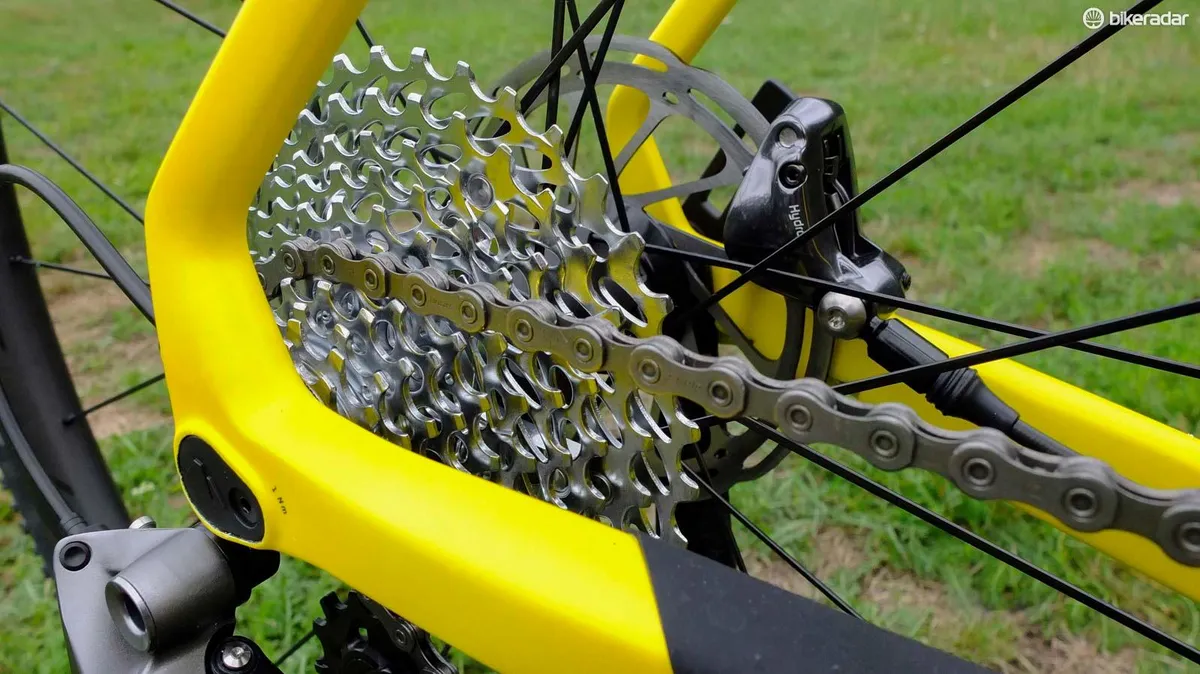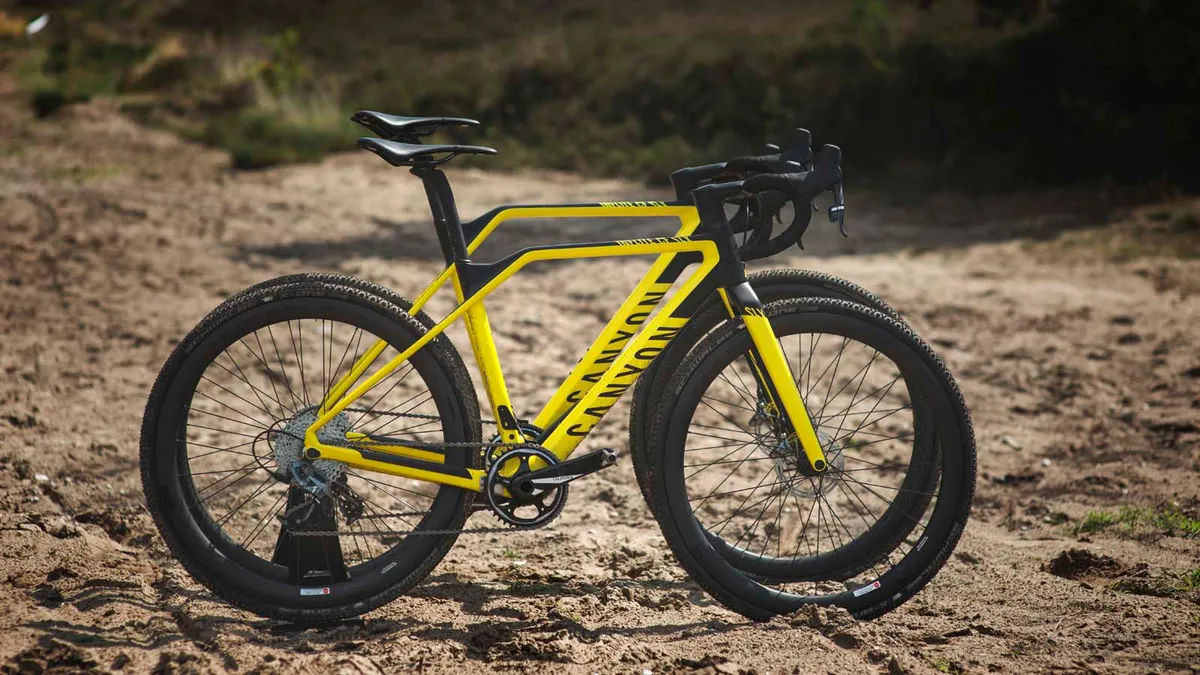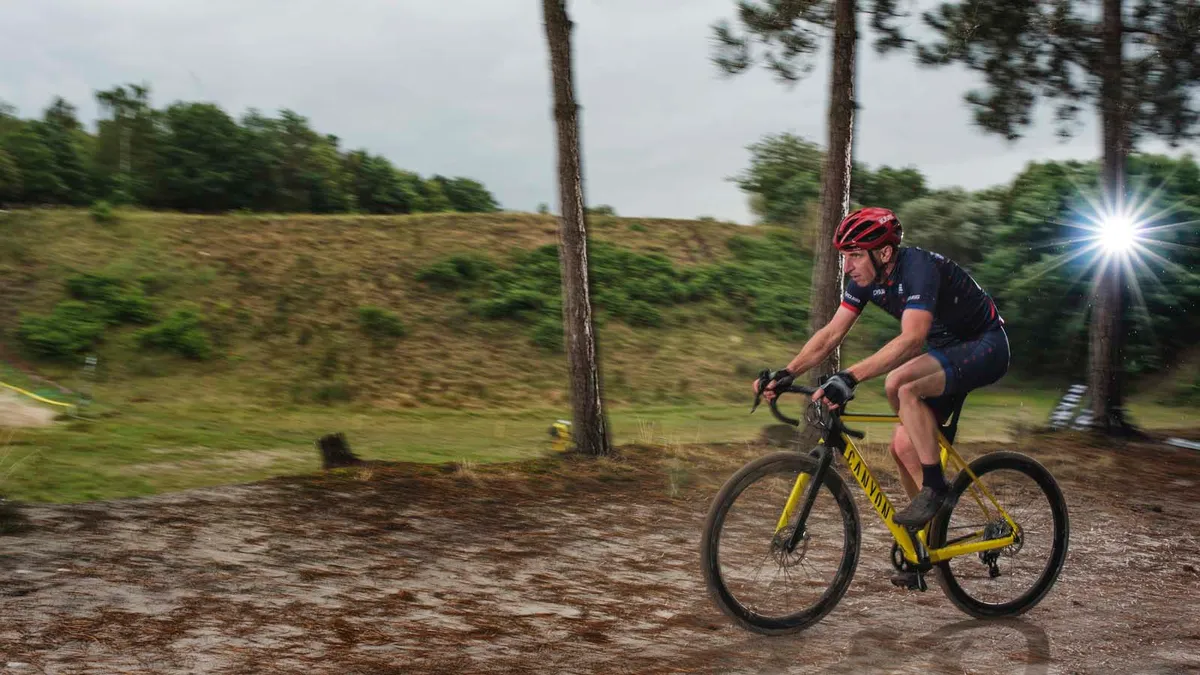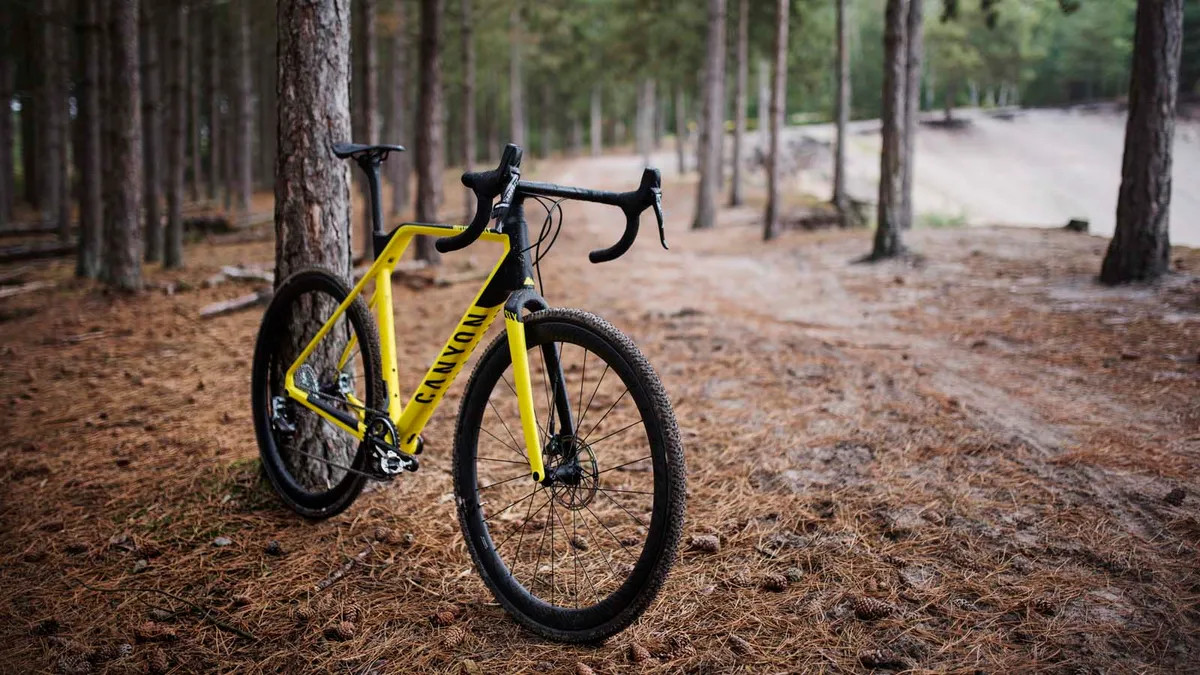The aluminium Inflite has been Canyon’s sole cyclocross offering for some years and also serves as an all-season road training machine. For a company known for its comprehensive model line up, the lack of a truly competitive ‘crosser was a gap that needed filling. Enter the Inflite CF SLX, which in Canyon speak is carbon fibre, and is already a Red Dot Design Award winner for 2017.
- Baptism of mud: a first attempt at a cyclocross season
- Cyclocross: what it is and how to get into it
Any thoughts that Canyon might simply recreate the aluminium Inflite in carbon were thankfully immediately dashed on seeing the new bike. From the outset, Canyon’s sole intention was to focus on the specific demands of cyclocross racing and find ways of satisfying them. The new bike is designed for racing, with no secondary use compromises — there are no fender mounts here.
The engineers considered the nature of modern cyclocross races, with higher speeds, greater technical challenges, physical obstacles, the variety of terrain and conditions, and the skill level of current racers — the best of whom specialise in the sport’s unique demands. They concluded that the new Inflite needed to be agile, easy to lift and carry, as light, stiff and durable as possible, and have good clearances, all while maintaining some comfort.
The demands of cyclocross

To satisfy two divergent needs, Canyon created the striking raised, kinked top tube. Rather than a sloping top tube, this higher, horizontal design increases the space inside the main triangle for easier shouldering, and drops away towards the seat stays to maximise the length of exposed seatpost for greater seated comfort and traction.
Just ahead of that kink is the bike’s natural balance point and exactly the place to pick it up for obstacles requiring a dismount and bike carry on one side. It’s a pretty good place to put your shoulder too, and Canyon has patented its carrying concept.
The down tube angle is 1.5 degrees steeper to increase the gap between it and the front tyre. For those who wrap their arm around the down tube and grab the end of the bar when shouldering the bike, this is a good thing.

Crucially for a pure race bike, the frame is completely UCI-legal and Canyon claims that a medium example weighs 940g for frame only and under 1,300g as a frameset.
Canyon used its own in-house CT scanner to examine the frame stresses that are unique to CX, especially dismounts, remounts and jumps or bunny hops. Reducing weight required a combination of high tensile and high and intermediate modulus carbon fibre to be used throughout the frameset, but without compromising either its necessary stiffness or durability to withstand these stresses.
Having enough clearance to reduce mud and debris build up is always a challenge in cyclocross, especially for those not fortunate enough to have more than one bike. Canyon’s solution is to reduce the frame’s surface area by 8.5 percent in key positions, particularly the slim seatstays and angular chainstays that should shed mud.

Both are bridgeless and widely spaced, also allowing for up to 40mm tyres to be used, and with UCI maximum 33mm tyres fitted, there’s 9mm clearance on each side. The down tube’s leading edge is substantially slimmed too to reduce muck collection.
Integrating the seatpost clamp beneath and in front of the top tube junction keeps it away from rear wheel spray and allows all of the extended seatpost to deflect, reducing muscle fatigue. Canyon says it’s 15g lighter than a conventional design and offers up to 15 percent more deflection from as much as 110mm of additional exposed seatpost.
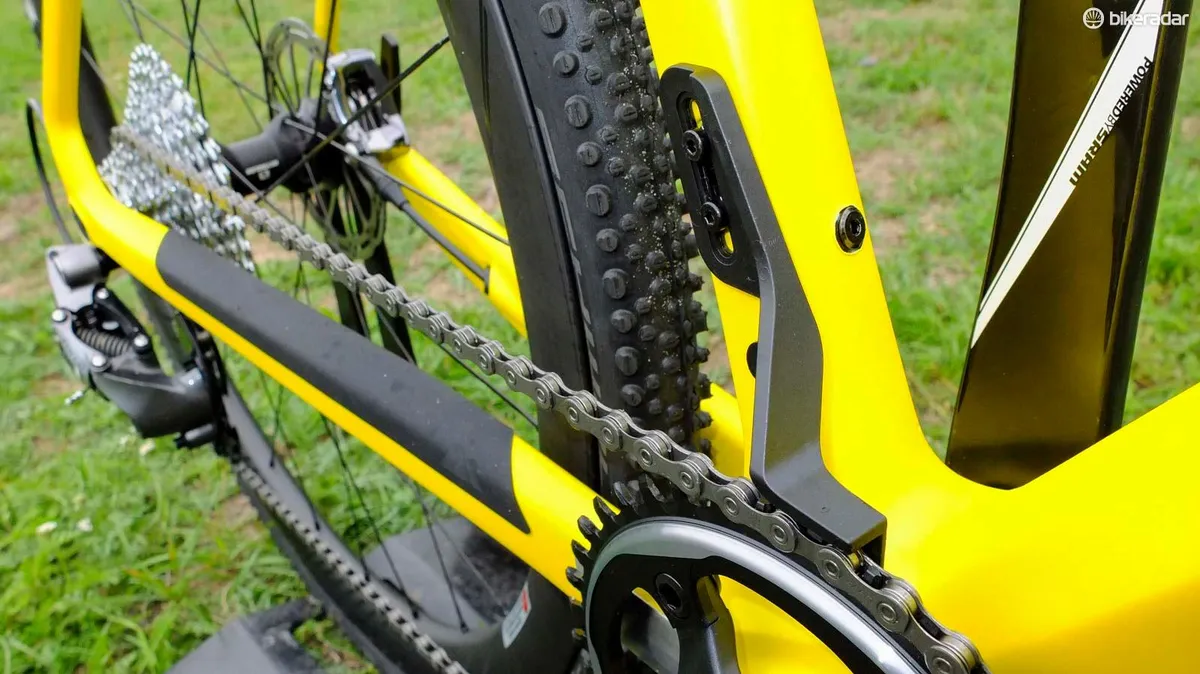
There are 1x and 2x drivetrain options, with the front mech mounting bolts housing a Canyon-designed 13g plastic chain catcher for single ring setups. All cable routing is internal, whether 1x, 2x or electronic, and potential friction is reduced by fully sealing all frame entry points, including a new splashguard for the front mech’s re-sited cable exit. The headset is better sealed too and there’s an integrated chain suck plate.
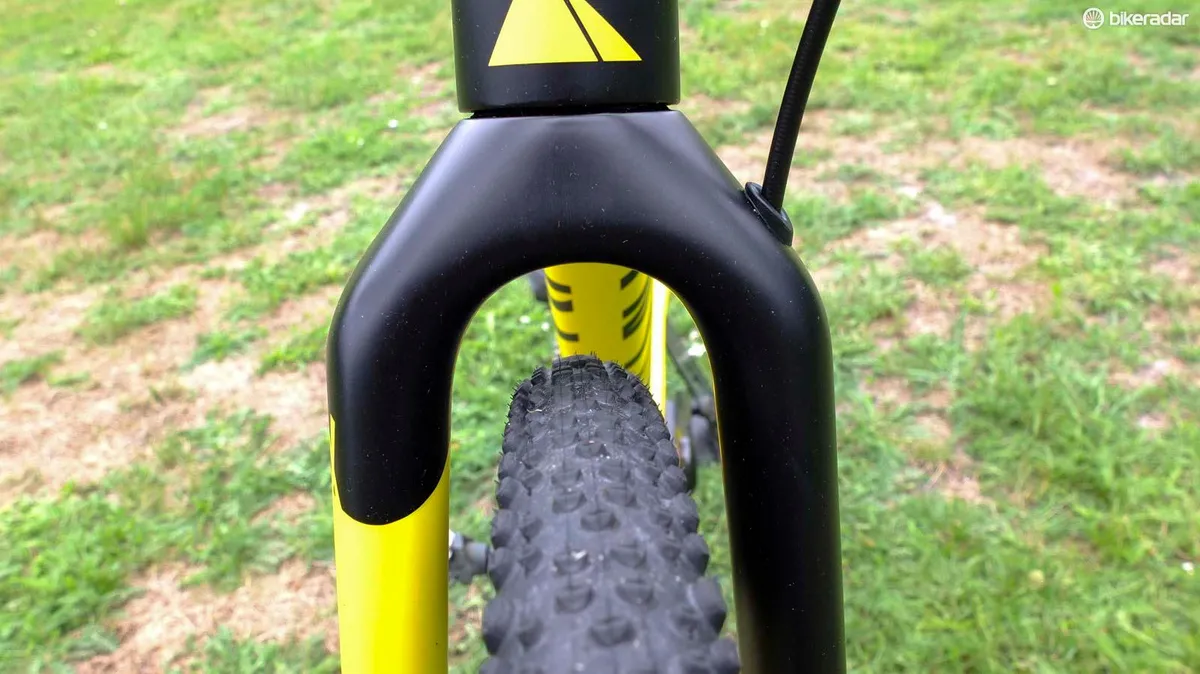
All bikes have 12mm thru-axles and optimised disc rotor sizes in combinations of 140mm and 160mm, depending on frame size and anticipated rider mass. All wheels will be tubeless ready with tubeless valves supplied for each bike, and fitted with Schwalbe’s tubeless X-One tyres.
Every bike comes with Canyon’s integrated H31 Ergocockpit CF, which has been tweaked for ‘cross, being 10mm shorter and with wider usable flat tops. The one-piece carbon cockpit is lighter than an individual bar and stem and has less places for dirt to collect, and Canyon says it offers 10 percent more vertical compliance.
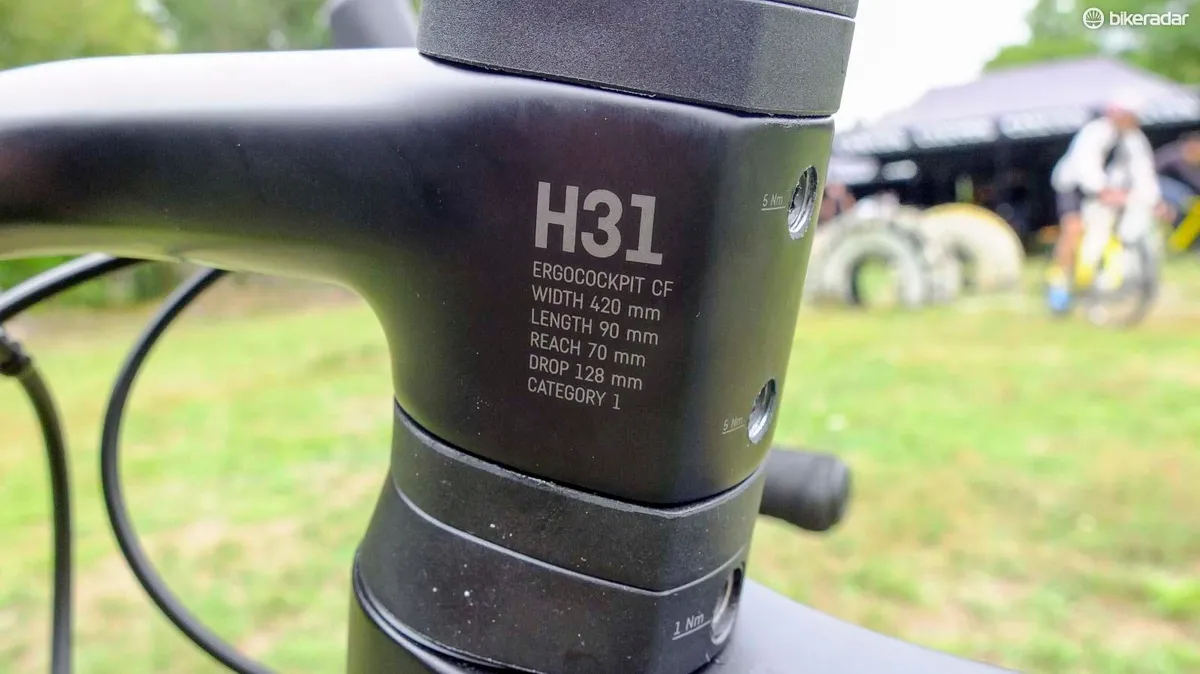
The drops are flared by three degrees, the tops are swept back by 6 degrees, they have shorter reach, a greater taping area and a wider, more supportive surface at first bend transition. The H31 will come in five sizes for the eight Inflite frame sizes.
Geometry
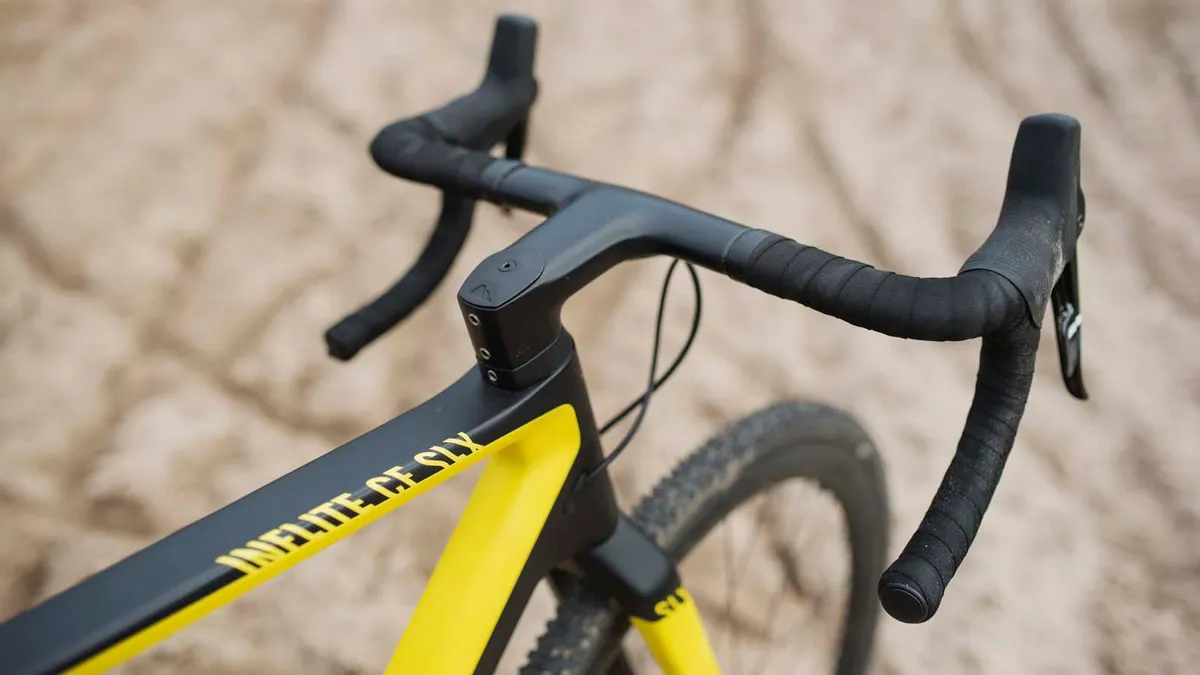
Canyon drew inspiration from mountain biking for the Inflite’s progressive ‘cross racing geometry and created the broadest size range possible to cater for all riders.
Because courses are faster and more technical, handling accuracy was a priority, so the Inflite has extended reach, longer wheelbase and greater fork rake for stability at speed.
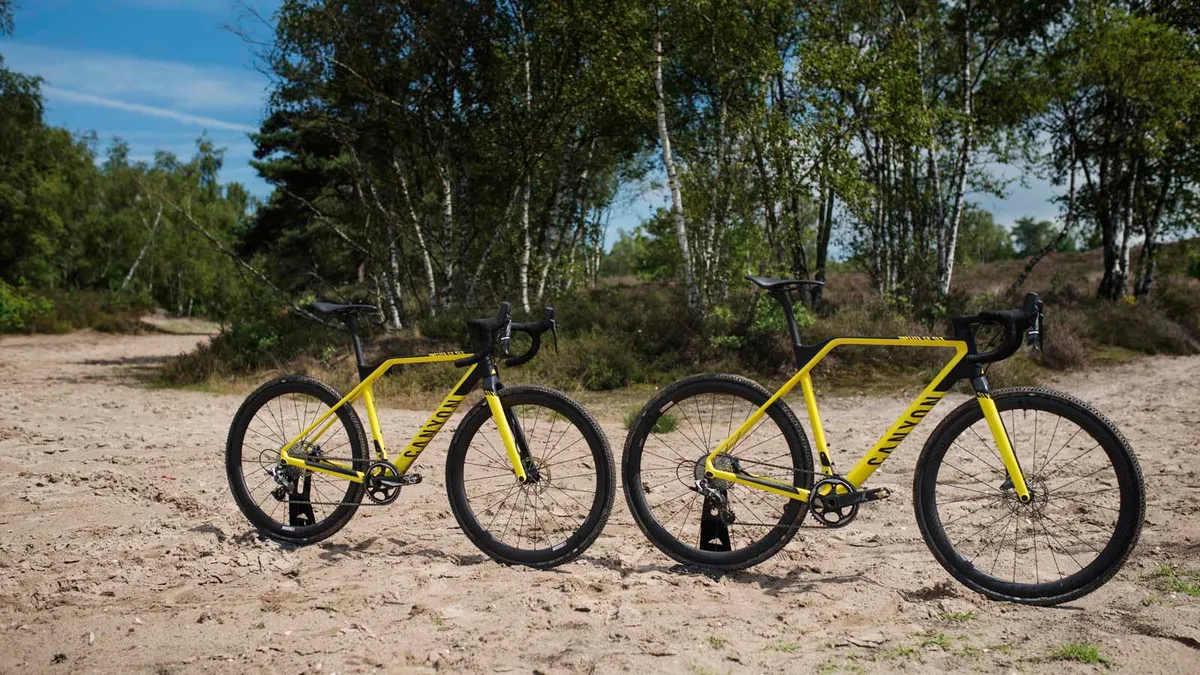
Eight frame sizes start from a new 3XS size for riders from 152cm tall up to 2XL. Both the 3XS and 2XS frames are designed around 650B wheels, which better suit the smaller bikes, reducing trail from 87.3mm to 72.6mm and the head angle from 69- to 70.2-degree compared to a 700c equivalent. It shortens the wheelbase while steepening the head angle and reducing trail, giving the same handling feel as the 700c machines.


First ride impressions

Canyon decided to host the Inflite CF SLX launch at the crucible of ‘cross, Zonhoven in Belgium. It seemed surprisingly calm and peaceful compared to my last visit on race day, but the infamous sandy bowl, or De Kuil — which translates rather underwhelmingly as The Ditch — still looked daunting.
The race was to be three laps of the circuit, including De Kuil’s longest sandy descent
First up came some dismount and remount tuition from Michael Rich, for those less familiar with the sport’s technical aspects. Yes, Michael Rich, German 100km team time trial gold medallist at the Olympics in Barcelona in 1992! It turns out he’d raced cyclocross before becoming a professional time trial specialist. Then, after a few circuits of a fully taped but truncated Superprestige course, we raced…
This is the sort of thinking we like here at BikeRadar! Of course I could get a feel for the new Inflite CF SLX while riding around alone, but a mass start race against 14 others would be a sure fire way to find the bike’s and my own, limits.
So far, I’d been very pleasantly surprised by the new Inflite’s performance. I want my ‘cross bike to be reassuringly stable but agile, with great tyre clearance, reasonably low weight and have good bump-smoothing ability to help with control and traction, and the Inflite had delivered on all counts. But would the story be the same when pushed much harder?
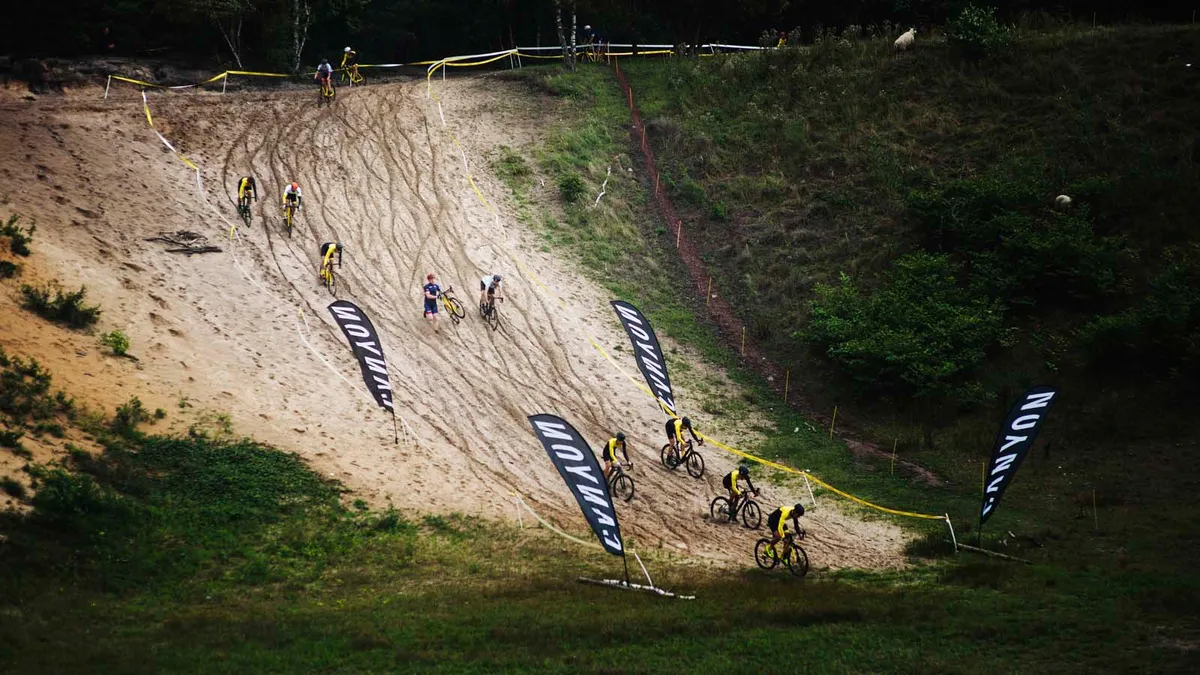
We lined up to race in early evening with rain in the air, giving a fitting autumnal feel. The race was to be three laps of the circuit, including De Kuil’s longest sandy descent and a run up on the other side. It’s fair to say that sand was most definitely a feature.
I took the hole shot, which was a surprise, and led through the first soft sand and in to the drag up to De Kuil. A younger, faster and lighter rider passed me before the descent, and when my front wheel washed out in the very deep, steep sand, so did a few more. On the plus side, my first unplanned dismount was followed by the need to carry the bike for the last of the downhill, then remount and sprint across the bottom of the bowl before hopping off, shouldering the Inflite and running the unrideable sandy bank out again.
I couldn’t even begin to guess how many times I’ve hurriedly shouldered a ‘cross bike and hit my elbow on the down tube because the frame triangle had limited space. That wasn’t a problem with the Inflite, and hoisting it by the down tube is often easier and safer still.
Dismounting and shouldering
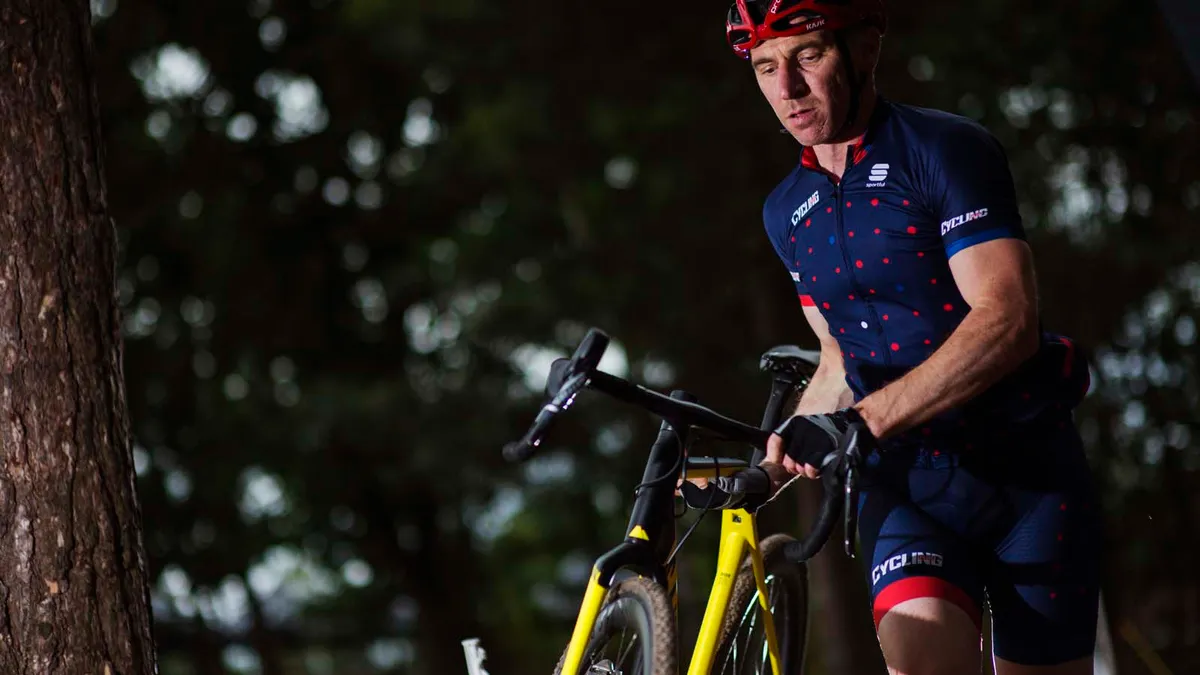
I’m 178cm/5’10” and was riding a medium sized Inflite, which was ideal, and weighed in at 7.61kg. Personally I carry the bike on my right shoulder with my arm wrapped around the head tube, holding on to the left brake hood. With the Inflite, my shoulder naturally settled several inches in front of the top tube kink.
Carrying it the alternate way, with my right arm passing below the down tube and gripping the left side drop, gave a similar result. Both felt equally solid and stable, and the elevated top tube allows plenty of room for many individual variations.
Another advantage of the top tube’s extra height comes when dismounting and remounting. If arriving at an obstacle to dismount at speed, it’s good practice to place one hand on the top tube after swinging one leg over, ready to unclip, lift and run. A higher top tube helps confidence when doing this since you don’t need to bend to reach it.
Also, when placing the bike back on the ground following a running or shoulder carry, you have a little less distance to lower it, and can remain more upright while doing so.
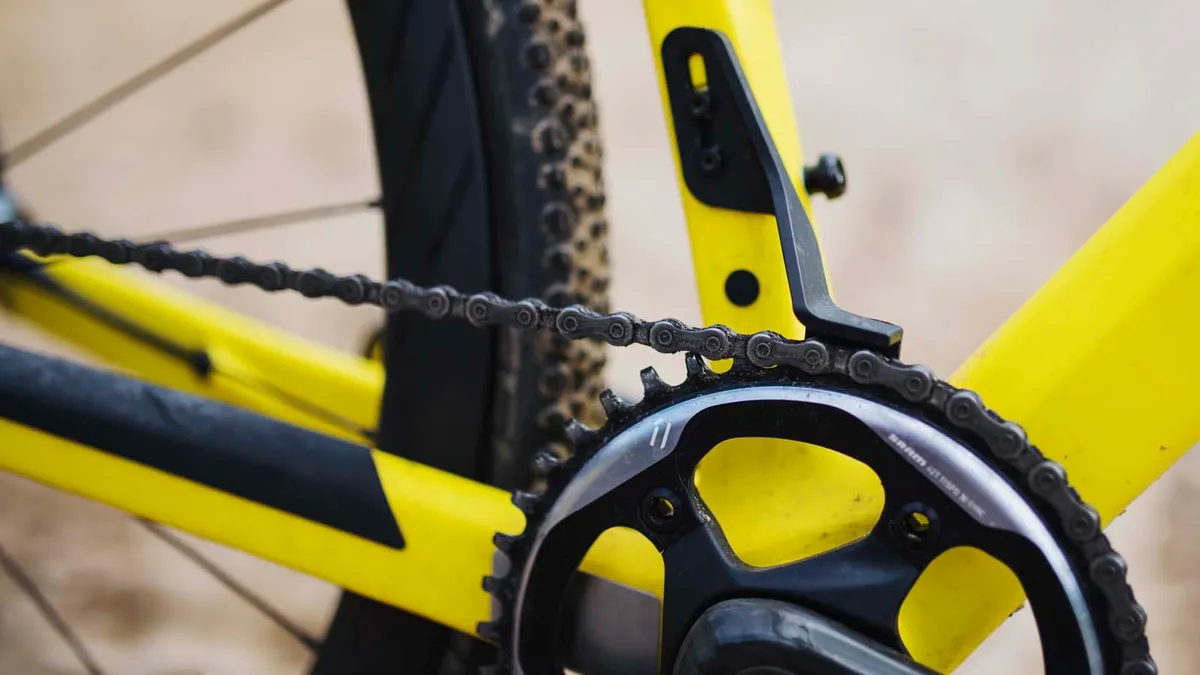
Schwalbe’s X-One All Round tyres, set up tubeless in this instance, are tenacious grippers in mixed terrain, and give a good account in light mud too. The sand, gravel and dirt I encountered wasn’t much of a challenge, especially with 30mm wide Reynolds Assault LE rims maximising the traction available.
SRAM’s 1x systems are simply the best option for cyclocross, and Canyon’s gearing choice is ideal, with a 40t ring matched with an 11-36 cassette. Yes it’s heavier and a little more widely spaced than an 11-28, but if you can live with some extra grams, you’ll likely find it useful.
The woodland singletrack was dispensed easily, then a stony, sandy slope and hairpin before a climb up to another deep sandy descent. I found I could stay settled on the Selle Italia SLR saddle and carry speed through sketchy corners with instant confidence and get back on the gas early on the exit.

Another long running carry was followed by a fast drop down across the heathland trails in to a sharp bend, testing braking control and accuracy, again simply dispatched, before the final quick trails and sandy patches to the finish.
Over the next two laps I felt completely at home on the Inflite, never cursing gappy gearing, just despairing of my fairly poor ability to descend quickly in super soft, steep sand, as it cost me too much time. With light rain falling and light levels dropping, the lungs were burning and the temples throbbing with the maximal efforts, but still the Inflite held every line and got me out of trouble more than once, when things became overly ambitious.
Race ready
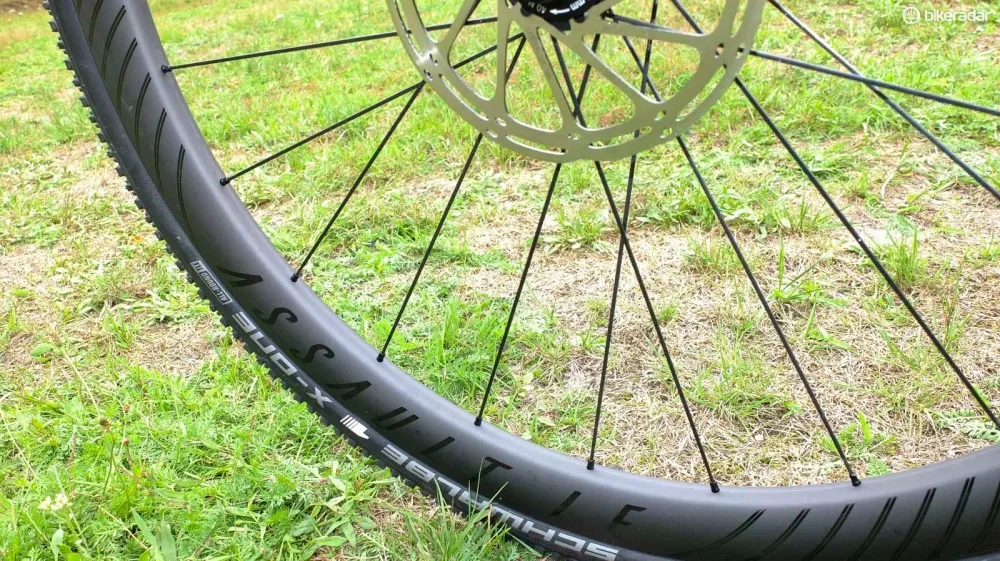
After being passed with half a lap to go by a rider who stretched the limits of the course somewhat, the race was on to the finish. A strong run, fast remount and gung-ho descent saw us exiting the final corner side by side. Different lines and differing sprinting styles saw me just pip him by half a wheel for 4th. I can certainly vouch for the Inflite’s ability to transmit seated power!
So what did that race prove? It left me certain in the knowledge that I’d very happily race the new Inflite CF SLX as it’s the complete package, ready to race out of the box — and it will come boxed.
When thinking what I’d look to upgrade, I think the coming season will see many more riders racing tubeless tyres due to their versatility, convenience and lower cost, and the Reynolds Assault LE wheelset is just excellent, so they would stay.
It’s a bold decision to supply the full carbon H31 integrated cockpit with every bike, but Canyon is confident its impact testing ensures it’s easily up to the task of ‘cross’s rough and tumble — certainly just as much as the competition is.
I found the widened, swept back, flat tops very supportive and grippy for pulling on the bar. I ride in the drops a lot of the time for ‘cross and found them well shaped, with easy reach to the levers. My only personal issue was hitting my wrist on the small radius curve above the levers when descending over bumps at times. It’s not hard to account for it when riding, but I’d prefer a bit more clearance here.
Early verdict
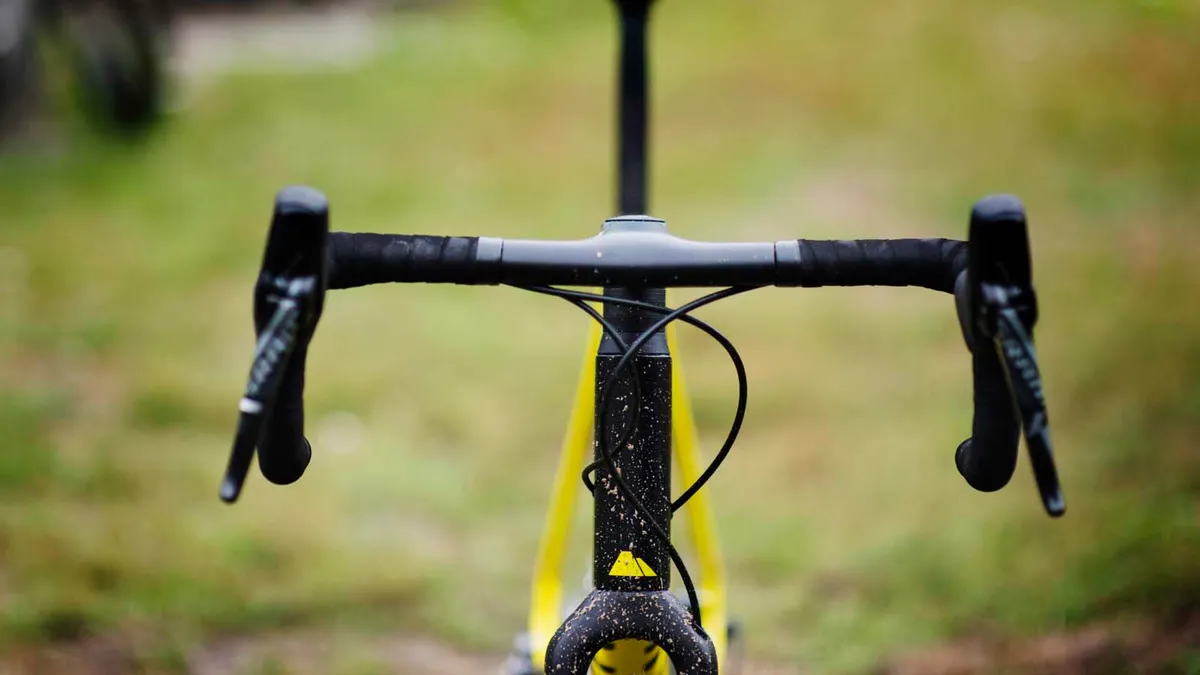
The overriding impressions were of how good the Inflite CF SLX dealt with the terrain, as I didn’t expect such impressive bump smoothing and vibration absorption. Clearly that extra seatpost extension helps at the rear and the fork and handlebar do a good job up front.
Given that tyre pressures were no lower than 25psi/1.7bar, and I’m a solid 76kg, there’s more potential benefit to be had for some riders. This ride quality really lifts confidence, as I found the following day when tearing along endless twisty, technical singletrack through the trees.

Pushing ever harder in to loose, pine cone covered corners, often with tight gaps on exit, became a challenge the Inflite rose to. Sprinting up or descending soft, steep banks was child’s play, with the bike feeling utterly solid, even at that point where you’ve almost stalled, but just manage to claw your way up and over the lip.
It’s impossible not to find yourself descending faster, cornering faster, and clearing sections you might previously have faltered in. The fact that Canyon has made such a wide range of sizes means that a proper race bike is available for just about anyone.
After several hours hammering the Inflite around Zonhoven, my only unanswered question is how well the bike will cope in some truly filthy British mud this winter, but after verifying all of Canyon’s claims up to now, I doubt it will disappoint.
Canyon Inflite CF SLX pricing and availability
- Inflite CF SLX 8.0 Pro Race: £2,499 / €2,799 / $2,999 / AU$3,999
- Inflite CF SLX 9.0: £2,899 / €3,199 / $3,299 / AU$4,599
- Inflite CF SLX 9.0 Pro Race: £3,599 / €3,999 / $3,999 / AU$5,699
- Inflite CF SLX Frameset: £1,799 / €1,999 / $TBD / AU$2,899
